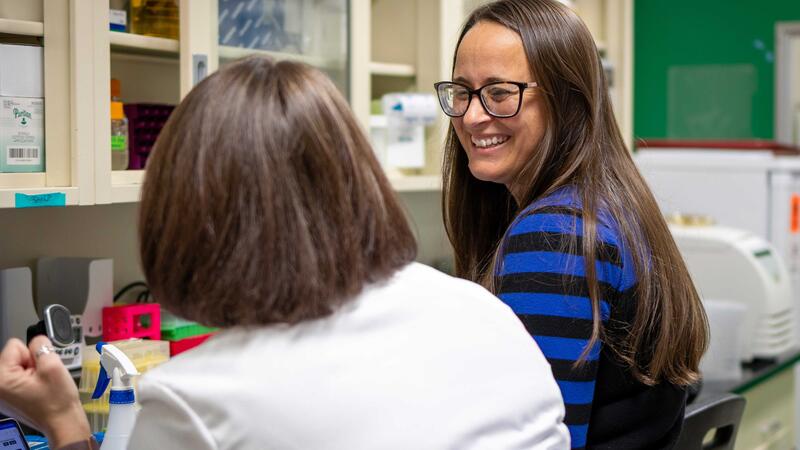News
Sustainable Bioenergy Cropping Systems
Unraveling the mysteries of the plant microbiome
Three years after joining the Great Lakes Bioenergy Research Center, Michigan State University microbiologist Sarah Lebeis has been tapped to guide the center’s scientific research.
GLBRC hosted a two-day conference to bridge traditional disciplinary divides and define a roadmap to guide lignin-based research over the coming decade.
Undergraduates, fellow grad students, postdoctoral researchers – and even her own advisor – credit Amy Enright Steinberger for her support in and out of the lab, which applies bacterial genetics to address critical issues in the bioeconomy and antimicrobial resistance.
Non-food crops like switchgrass are a promising source of plant-based fuels like ethanol and isobutanol, which can be produced by microbes. But switchgrass grown during droughts has high levels of chemicals that limit how much sugar these microbes can convert to alcohol. This experiment shows that breaking down switchgrass with ammonia, water, and enzymes and then lowering the acidity of the resulting hydrolysate solution both improve fermentation and biofuel production from switchgrass, especially when grown in drought conditions.
An enterprising group of scientists are working to bring their discoveries from the lab to the world of commerce.
Over more than three decades, federal agencies including the Department of Energy, National Institutes of Health and National Science Foundation have supported Brian Fox's efforts to study that basic biological chemistry — and to engineer changes to organisms that can benefit humanity.
The Great Lakes Bioenergy Research Center has recognized eight members for their contributions to the center’s mission through science, public engagement, entrepreneurship, leadership, and service. Look for stories about each of the award recipients to be published in the coming weeks.
Great Lakes Bioenergy Research Center co-investigator Phil Robertson has been elected to the National Academy of Sciences, one of the highest honors for U.S. scientists.
Planting bioenergy crops such as switchgrass and prairie along with crops like corn and soybeans can limit erosion, rebuild soil carbon, and promote natural pest control. Deciding where and how to plant these crops involves tradeoffs between environmental benefits and profit. A new computer model balances economic, biodiversity, greenhouse gas, and water quality objectives to determine the best possible layout based on the chosen goals.
UW–Madison graduate student Sam Davison hopes to make the world seem a little more interesting and people feel a bit less pessimistic. If someone learns some science along the way, that’s just a bonus.
Samatha Kelly is a first year PhD student in the Donohue and Noguera labs. She works in late-stage bioprocessing, engineering microbes to break down complex plant structures like lignin and to separate the most useful products.





